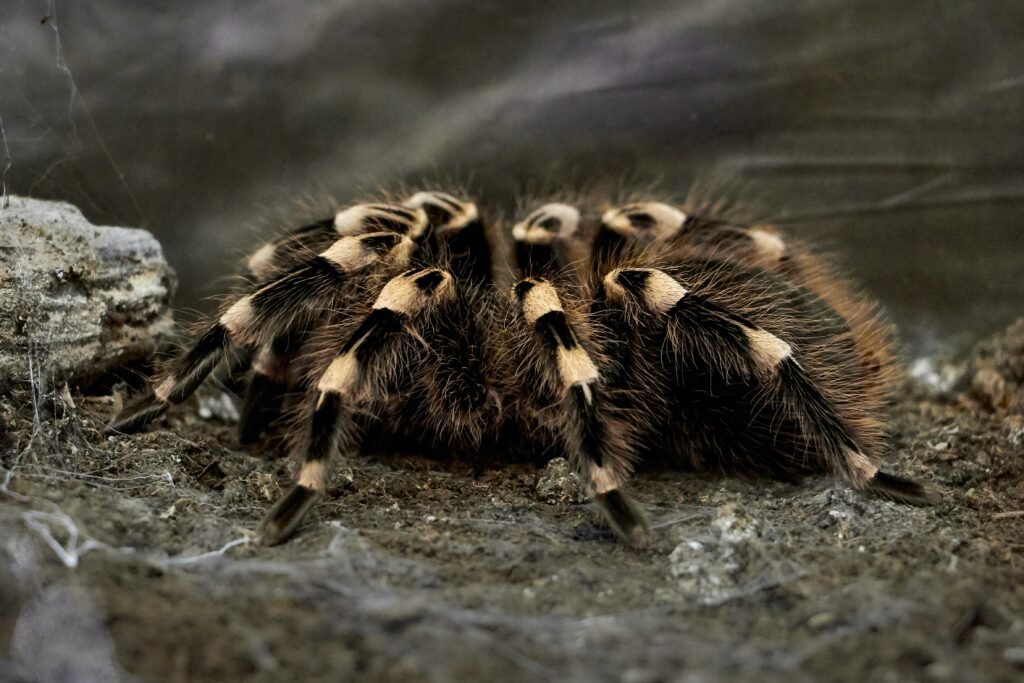Have you ever wondered how long the mating process typically lasts for tarantulas? These fascinating arachnids, known for their immense size and unique mating rituals, engage in a complex courtship dance before they can mate successfully. From the initial approach to the elaborate mating display, this article explores the various stages of the tarantula mating process and sheds light on the average duration of this intriguing phenomenon. So, sit back and prepare to be captivated by the secrets of the tarantula’s love life!

Overview
Tarantulas are fascinating creatures known for their large size and impressive demeanor. They engage in a complex mating process that involves various factors and behaviors. Understanding the factors that influence mating duration, the pre-mating behaviors, and the challenges faced during mating is crucial to gaining insight into these fascinating creatures.
Factors That Influence Mating Duration
Size and Age of Tarantulas
The size and age of tarantulas play a significant role in determining the duration of their mating process. Mature females tend to have longer mating sessions compared to younger ones. Additionally, larger tarantulas require more time for copulation due to their size and the distance the sperm needs to travel to reach the female’s spermathecae.
Species Differences
Different species of tarantulas have different mating behaviors and preferences, leading to variations in mating duration. Some species may engage in prolonged courtship rituals, while others may have shorter copulation periods. Understanding these species differences can provide valuable insights into the overall mating behavior of tarantulas.
Environmental Conditions
Environmental conditions, such as temperature and humidity, can also affect the mating duration of tarantulas. Warmer temperatures tend to increase the activity levels of tarantulas, potentially shortening the mating process. Similarly, higher humidity levels might create a more favorable environment for mating behaviors, leading to longer copulation periods.
Pre-Mating Behavior
Web Building and Sperm Web
Before the mating process begins, male tarantulas often engage in web-building behaviors. These intricate webs serve as a means of communication and courtship display to attract potential mates. In addition to the courtship web, male tarantulas also construct a sperm web in anticipation of mating. This web contains their spermatophore, a highly specialized package of sperm.
Male Maturation
Male tarantulas undergo a process known as maturation before they are ready to mate. This process involves shedding their exoskeleton multiple times until they reach sexual maturity. The maturation period can vary depending on the species and environmental conditions, but once mature, males actively begin searching for potential female mates.
Mate Search
Once males have reached maturity, they embark on a quest to find potential female mates. This process can involve traversing vast distances, navigating intricate terrains, and even venturing into areas with potential predation risks. This search for a suitable mate can be time-consuming and significantly influence the overall mating duration.
Mating Process
Approaching and Courtship
When a male tarantula finds a potential mate, it begins the intricate courtship ritual. This process involves a series of behaviors aimed at attracting and wooing the female. Males may perform elaborate dances, tapping on the female’s web, or vibrating their bodies to produce specific vibrations. These courtship displays not only serve to impress the female but also assess her receptiveness to mating.
Sperm Transfer
After successful courtship, the male tarantula approaches the female for copulation. Sperm transfer occurs through the use of pedipalps, appendages located near the spider’s mouth. The male transfers his spermatophore, containing the sperm, to the female’s genital opening. This process can take several minutes to complete and is a crucial step in the successful fertilization of the female’s eggs.
Post-Mating Behavior
Once copulation is complete, the male tarantula often remains near the female for some time. This behavior is thought to provide protection to the female and ensure the successful fertilization of the eggs. However, it is essential to note that post-mating behavior can vary between species, with some males departing immediately after copulation.

Mating Duration in Different Tarantula Species
Tarantula species exhibit a wide range of mating durations. Some species, such as the Mexican Redknee tarantula (Brachypelma smithi), have been observed engaging in mating sessions that last several hours. On the other hand, some species, such as the Pinktoe tarantula (Avicularia avicularia), have been recorded to have relatively shorter copulation periods, typically ranging from a few minutes to an hour.
Tarantula Mating Records
Mating records have played a vital role in expanding our knowledge of tarantula mating behaviors. Researchers and enthusiasts have meticulously documented the mating processes of various tarantula species, providing valuable insights into their reproductive habits. These records have helped in understanding patterns, preferences, and potential variations associated with mating duration among different species.

Breeding Challenges and Implications
Cannibalism Risk
One of the significant challenges faced during tarantula mating is the risk of cannibalism. Female tarantulas are known to sometimes display aggressive behavior towards males, potentially leading to their death. This risk necessitates careful consideration and observation during the mating process to ensure the safety of both males and females involved.
Non-Receptive Females
In some cases, female tarantulas may not be receptive to mating attempts by males. This can lead to prolonged courtship periods without successful copulation. Understanding the cues and behaviors displayed by non-receptive females becomes crucial in reducing unnecessary stress on males and minimizing the risk of cannibalism.
Mating in Captivity
Breeding tarantulas in captivity presents its own set of challenges. Mimicking the natural environmental conditions, ensuring the health and well-being of both males and females, and managing the logistics of housing and observing the mating process can be complex. These challenges highlight the importance of responsible breeding practices and the need to prioritize the welfare of the tarantulas involved.
Conclusion
The mating process of tarantulas is a fascinating and intricate affair influenced by a variety of factors. Size and age, species differences, and environmental conditions all play a role in determining the duration of the mating process. Pre-mating behaviors, such as web-building and male maturation, pave the way for successful copulation. The actual mating process involves courtship rituals, sperm transfer, and post-mating behaviors that ensure the continuation of the species. Understanding the challenges faced during mating, such as cannibalism risk, non-receptive females, and breeding in captivity, is crucial in promoting responsible breeding practices and shedding light on the intricate nature of tarantula reproduction.

